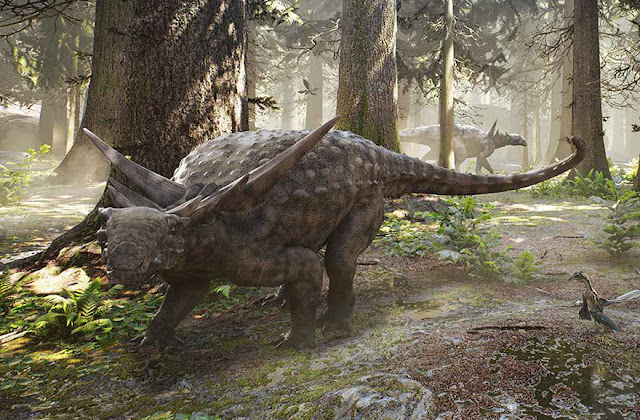The Royal Tyrrell Museum of
Palaeontology in Alberta, Canada unveiled “Nodosaur” Dinosaur Mummy with skin
and gust intact, you can’t even see its bones. But yet scientists are hailing
it as maybe the best-preserved dinosaur specimen ever discovered. The 110
million years later, those bones remain covered by the creature’s intact skin
and armor. Back in 2011, a heavy equipment operator by the name of Shawn Funk,
who works for energy company Suncor in Alberta, was drilling crude oil sands
when he abruptly uncovered walnut brown rocks that looked like ribs. The
dinosaur is so well-preserved that numerous have taken to calling it not a
fossil, but an honest-to-goodness “dinosaur mummy. However, the creature’s
skin, armor, and even some of its guts intact, researchers are amazed at its
nearly unprecedented level of preservation.
The dinosaur, with fossilized
skin and gut contents intact, came from the Millennium Mine six years ago in
the oil sands of northern Alberta, once a seabed. That sea was full of life,
teeming with huge reptiles that grew as long as 60 feet, while its shores were
traversed by enormous dinosaurs for millions of years. The area has been
coughing up fossils since the beginning of recorded time. Cabel Brown a
researcher said we don’t just have a skeleton; even we have a dinosaur as it
would have been. When this dinosaur a member of a new species named “nodosaur”
was alive, it was a huge four-legged herbivore protected by a spiky, plated
armor and weighing in at approximately 3,000 pounds. The mummified “nodosaur”
remain so intact is still something of a mystery may have been swept away by a
flooded river and carried out to sea, where it eventually sank.
Over millions of years on the
ocean floor, minerals took the place of the dinosaur’s armor and skin,
preserving it in the lifelike form now on display. Moreover, the “nodosaur” was
so well-preserved; getting it into its current display form was still an
arduous undertaking. The creature was, in fact, first discovered in 2011 when a
crude oil mine worker accidentally discovered the specimen while on the job.
Since that lucky moment, it has taken researchers 7,000 hours over the course
of the last six years to both test the remains and prepare them for display at
the Royal Tyrrell Museum, where visitors now have the chance to see the closest
thing to a real-life dinosaur that the world has likely ever seen.






















































